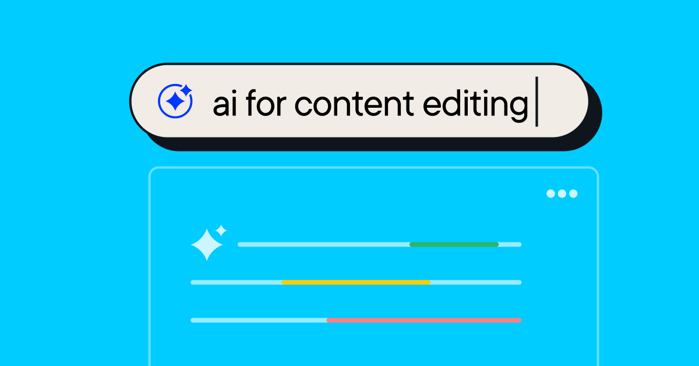Human experience: The new battleground for B2B
B2B customers are now demanding the same quality experiences they're used to in their personal lives.


Meet Ryan. By day, Ryan is a procurement manager for a major food manufacturer with responsibility for the purchase of refrigeration solutions. By night, Ryan gets an Uber to meet friends at a vegan restaurant and uploads photos of something avocado-based to Instagram; or stays in, orders a poke bowl from Deliveroo, watches Netflix and smiles when he gets over 100 likes for his arch tweet about season four of Money Heist.
The point here is that Ryan is a human – and a millennial human to boot. There are countless Ryans working in similar procurement roles in businesses up and down the country. And all of them are accustomed to superlative customer experiences – frictionless, omnichannel, personalized – from the brands they interact with in their personal lives.
The B2B opportunity
So, if you’re in the business of selling commercial refrigeration solutions to our Ryan, or similar B2B products to another, does this matter? The easy answer might be: not so much. After all, complex B2B sales can’t be compared to the experience of booking a taxi or ordering a pizza.
There are typically specific requirements around payment terms, service levels, legal and tax considerations, contractual periods and logistical needs. The decisions aren’t made by the Ryans alone. And anyway, it’s not like you can buy things like sophisticated cooling systems on Amazon, right?
Wrong! You can actually buy hundreds of thousands of things like sophisticated cooling systems on Amazon Business – a B2B marketplace – and while larger items still tend to be purchased through an agreed contract with a preferred supplier, it’s becoming increasingly common for B2B organizations to allow procurement teams to source smaller items more widely.
But beyond that, evidence shows that humans like Ryan are demanding exactly the same sort of superlative customer experiences from B2B businesses in their professional lives as they do from B2C brands in a personal capacity.
In fact, 82% of business buyers want the same experience as when they’re buying for themselves, according to this survey by Salesforce – and two-thirds have switched vendors to get it.
Meanwhile, 96% of B2B buyers say the customer experience directly affects whether they’ll buy again. But, only 27% say companies generally excel at meeting their standards for an overall B2B experience, suggesting there is ample room for improvement.
There is no question, then, that customer experience has become as critical a driver for success for B2B business as it has for B2C. And there’s clear ROI: McKinsey reports that in cases where companies have undertaken broad transformations of their customer experience processes, the impact among B2B and B2C players has been similar, with higher client-satisfaction scores, reductions of 10 to 20% in cost to serve, revenue growth of 10 to 15%, and an increase in employee satisfaction.
Start with the humans
So, how do B2B businesses embrace this opportunity? Firstly, start with the humans. And as we’ve said, it’s not just our Ryan in procurement – they’re just some of many decision-makers and influencers in the buying process. And besides, customer interaction extends beyond the purchase funnel to all activities involved in serving multiple customer needs, from fulfilment to billing to support.
To which end there’s an even greater burning need to segment customers by needs and behaviors and deliver frictionless, personalized experiences in the B2B world than there is in B2C.
To deliver on that requires two key foundations: 1) a human-centered approach to user needs and 2) a technology platform that can deliver personalized experiences at scale.
1. A human-centered approach to user needs
This involves focusing not only on the many humans involved in the buying decision process but also the people that your products will impact: the end user who wants an intuitive experience or the stakeholders who want to see business value.
Quantitative and qualitative research into the needs of the different users, and a data-driven analysis of their behaviors, provide the foundation upon which you can begin to segment, customize and ultimately deliver the personalized experiences that those humans crave.
For example, Candyspace conceived and created a customer portal for Rolls-Royce’s aerospace business that delivered experiences that were personalized to users based on their job role. So fleet managers, service engineers, internal Rolls-Royce employees and many more user types were served a custom and personalized set of applications specific to their needs.
2. A technology platform that can deliver personalized experiences at scale
The additional complexity of B2B sales and end users suggests there’s an even greater need than in B2C for a platform that has the sophistication to deliver personalized experiences at scale. A standard CMS is unlikely to suffice, which is where Digital Experience Platforms (DXPs) such as Optimizely come in.
A DXP can make the complex simple for B2B businesses, featuring built-in payment, optimized check-out flows, CRM, data integration and AI optimization, and the ability to deliver dynamic content seamlessly across all customer touchpoints.
There are lessons from B2C: for example, the work Candyspace is doing for Mazda on Optimizely. With dealerships shut during lockdown, the automotive brand’s web platform became a central hub for customer engagement and lead conversion. Our rapid user testing with Mazda owners and prospects exposed key areas for fundamental improvements in user journeys, allowing us to optimize UX and ensure consistency of experience across all digital touchpoints. As a consequence, we reduced bounce by 50%, increased finance conversions by 55% and improved dealer locator conversion by 39%.
And what of Ryan…
Ryan is happy. He just booked an Airbnb in Reykjavik, bought a handmade lamp on Etsy, saved a load of money by switching his insurance provider to Lemonade and is about to dig into a bowl of overnight oats.
What will really delight our millennial procurement manager is when he’s getting that same quality of experiences from his suppliers at work.

